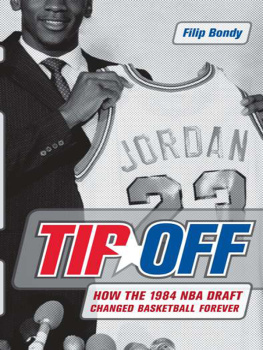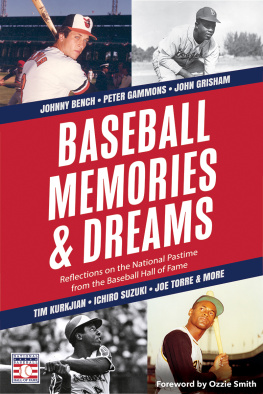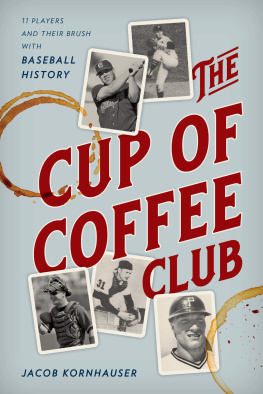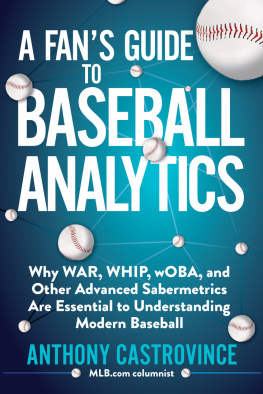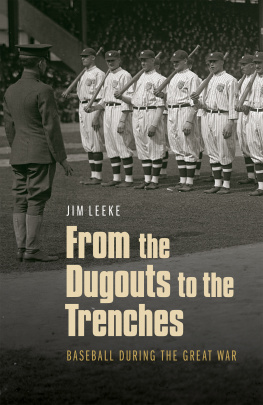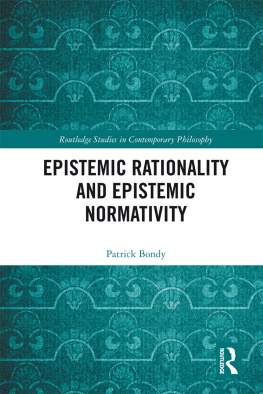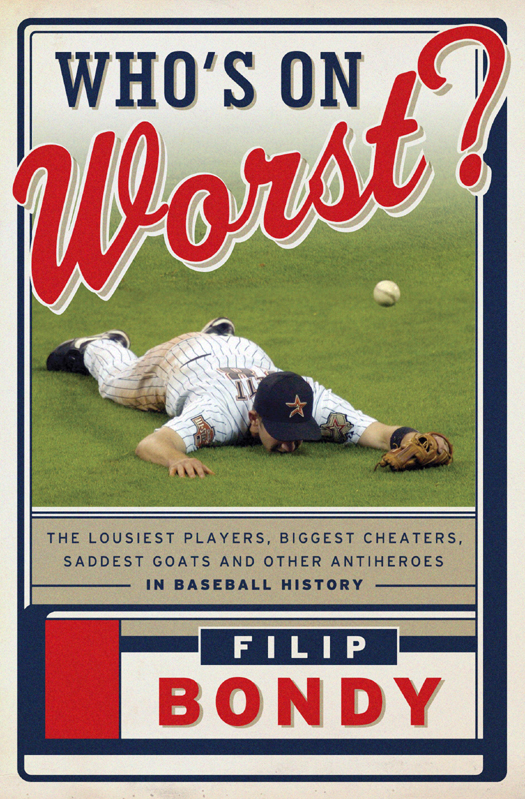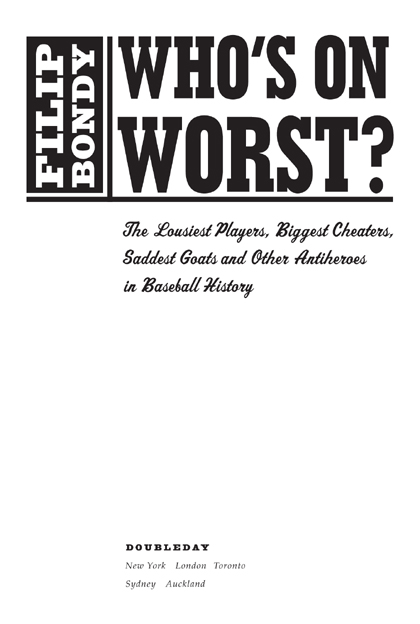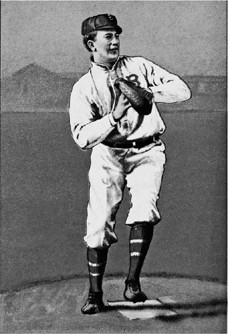
Copyright 2013 by Filip Bondy
All rights reserved. Published in the United States by Doubleday, a division of Random House, Inc., New York, and in Canada by Random House of Canada Limited, Toronto.
www.doubleday.com
DOUBLEDAY and the portrayal of an anchor with a dolphin are registered trademarks of Random House, Inc.
Jacket design by Michael J. Windsor
Jacket illustration AP Photo/Brett Coomer
Library of Congress Cataloging-in-Publication Data Bondy, Filip.
Whos on worst? : the lousiest players, biggest cheaters, saddest goats and other antiheroes in baseball history / Filip Bondy.
p. cm.
1. BaseballMiscellanea. I. Title.
GV873.B654 2013
796.357dc23 2012028623
eISBN: 978-0-385-53613-4
v3.1
For Charlotte, LynNell, Larisa, Halley, Sofia, Matilda, and Helen
THE MENDOZA LINE
THE WORST HITTERS OF ALL TIME
HOBSONS DISEASE
THE WORST FIELDERS OF ALL TIME
LIMA TIME!
THE WORST PITCHERS OF ALL TIME
$23,000,097 PER WIN
MOST OVERPAID YANKEES
TOO FAT TO BAT
MOST OVERPAID, OUTSIDE THE BRONX
WHATS AN EMERY BOARD?
THE BIGGEST CHEATERS OF ALL TIME
NUMBER 1/8
THE ODDEST BALLPLAYERS OF ALL TIME
BONEHEAD
THE GREATEST GOATS OF ALL TIME
ANYONE SEEN MY MITT?
THE WORST TEAMMATES EVER
EVEN STEROIDS DIDNT HELP
THE MOST PATHETIC JUICEHEADS OF ALL TIME
THE SHOE-SHINE PITCH
THE LUCKIEST PLAYERS OF ALL TIME
WHEN A ROSE IS NOT A ROSE
SONS AND BROTHERS WHO DIDNT CUT IT
THE PHOLD
THE WORST MANAGERS EVER
DO AS I SAY, NOT AS I PLAY
THE LOUSIEST PLAYERS TURNED GENIUSES
BEYOND THE BOSS
THE WORST OWNERS OF ALL TIME
T HERE ARE A mere 750 active roster spots on the thirty Major League Baseball clubs. There are perhaps a billion people in the United States, Mexico, east Asia, plus Central and South America who would betray best friends and gladly suffer painful, performance-enhancing treatments in order to obtain these lucrative, perk-barreled jobs. If the staggering odds of success were the same in lawyering or sportswriting, most of us now gainfully employed would be unemployed, rejected out of hand as amateurish hacks. So it is a bit unjust, really, to label any Chicago Cub, San Diego Padre, or Kansas City Royal a lousy athlete. These players are the best of the best, or they would quickly be cut adrift. Their hand-eye coordination, their swiftness of foot, and their strength of arm must surely be otherworldly.
And yet, from where we critics sit in the bleachers or in front of our laptops, many of these men are not only mortal; they often appear to be clumsy bunglers. They flub grounders, swing at curveballs in the dirt, get picked off base, drop fly balls, walk batters with the bases loaded, or forget there is only one man out. In a sport that demands smart, spontaneous decision making, these players are at times terrible problem solvers. Baseball is all about failure, we know. Even the greatest of batters bangs out a hit less than 35 percent of the time. Each game is declared finished when players on the losing side produce twenty-seven outsbarring extra innings, in which case they fail even more often. There is no great shame in any of that. But some of these players over the decades have elevated failure, or folly, to fresh, artful levels, which is what this book is all about.
Without these major-league oafs who have made such a hash of the sport, icons such as Willie Mays, Mariano Rivera, and Joe DiMaggio would not glitter quite so brightly. Lesser lights also inspire the rest of us in their own flawed way, make us all dream big-league dreams. If Marv Throneberry, Bob Uecker, Mario Mendoza, and Kei Igawa can achieve professional stature, signing big-league contracts for a season or more, isnt there considerable hope for our children, our grandchildren?
This book examines and ranks these ungainly muses in a number of unique categories. Every major-league ballplayer who ever allowed a passed ball or hurled a double-play relay into the stands becomes a candidate for inclusion. Every coach or owner who blew up a franchise is also eligible. There are some decent players in here, too, if they cheated too often, acted too callously, or merely had the good fortune to be paid way too much for their mediocre services. The better the backstory, the more prominent the entry. Only one caveat: in order to qualify, a fellow needs to have appeared in, or impacted, at least one major-league game during a regular season. No minor-league Michael Jordans allowed.

H ITTING IS A difficult craft, inherently prone to humbling disappointment. But then there are those players who further lower the bar, who aspire desperately to bloop a single every fourth or fifth time at the plate, who ought never have taken bat in hand. Even as baseball evolved from dead-ball to juiced-body eras, some batters always stood out as much worse than those around them. They struggled to cross the Mendoza Line, to remain above that .200 mark and avoid detection.
We dont include pitchers in this category. They are specialists with alibis ready in pocket. All other positions are eligible, however, and most are represented here. Bring us your poor batting averages, your low on-base percentages, your high strikeout-to-walk ratios, your embarrassing WARs (wins above replacement), and your humiliating sabermetrics.
BILL BERGEN AND HIS 0-FOR-45 (46?) SLUMP
Bill Bergen was a catcher for the Brooklyn Superbas in the dead-ball era, when everyone was in a slump of sorts. Still, even by the measure of his day, Bergen set the gold standard for persistent batting ineptitude. While he demonstrated his futility way back in 1909, his achievement lives and breathes today, still fueling controversy as to whether his slump might really have been 0 for 46. Historians have argued among themselves recently whether one particular handwritten scorecard had him at 0 for 2 in a game or 0 for 3. During an equally impressive slump by Craig Counsell of the Brewers in 2011, The New York Times became somewhat obsessed with this statistical debate, running two lengthy stories about Bergen, one a correction of sorts. And when Counsell laced a pinch-hit single at 0 for 45, it meant that the Bergen argument would live another day and remain just as relevant.


